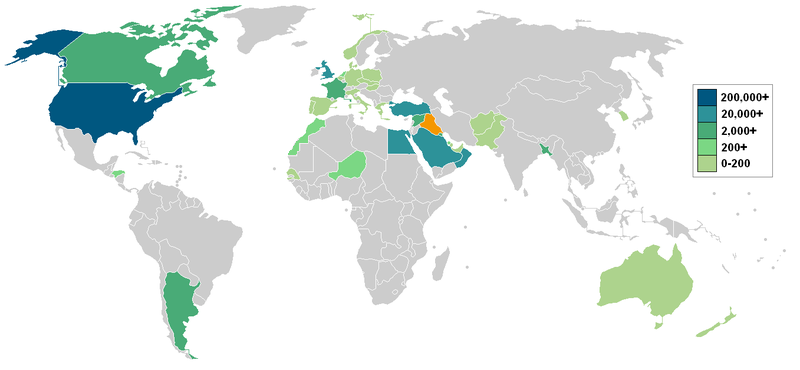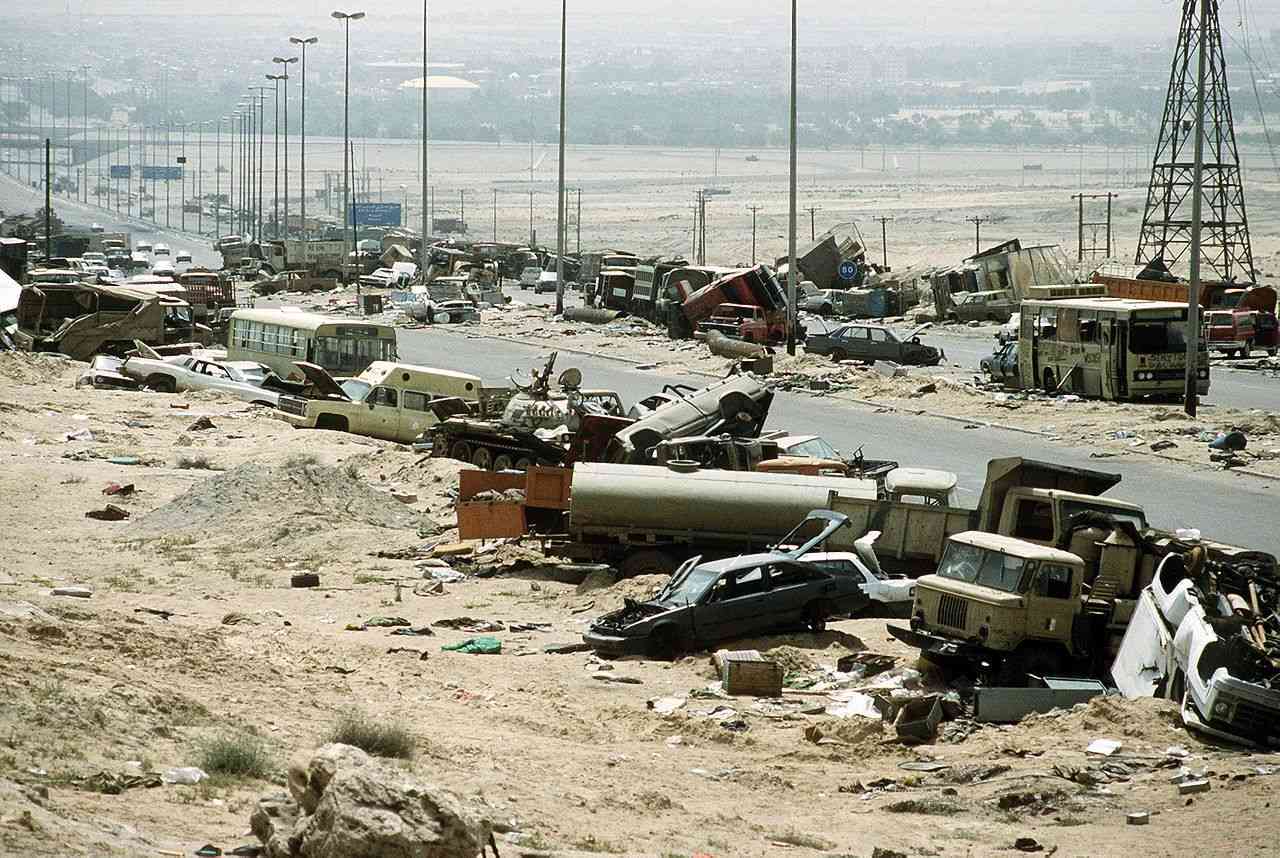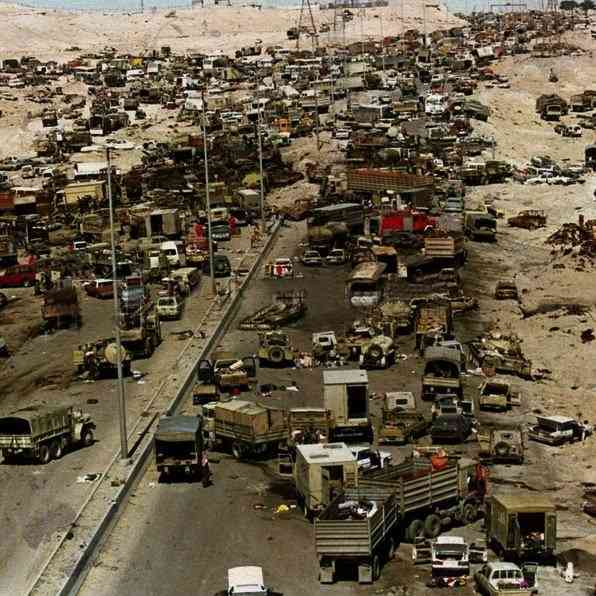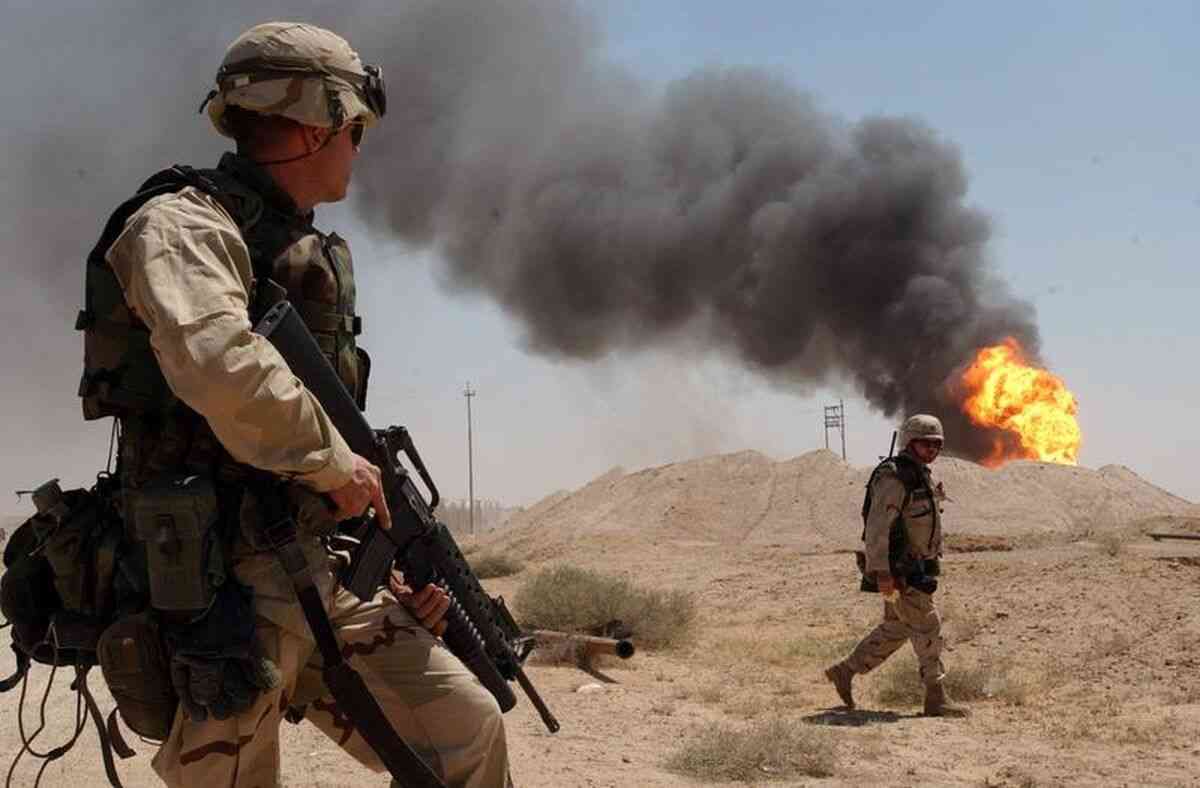The Iraqi invasion of Kuwait, known as the Iraq-Kuwait War, is a conflict that broke out between Iraq and Kuwait, which resulted in the occupation of Kuwait's lands by Iraqi forces for a period of six months. Then, the international military forces led by the United Nations entered the so-called Gulf War.
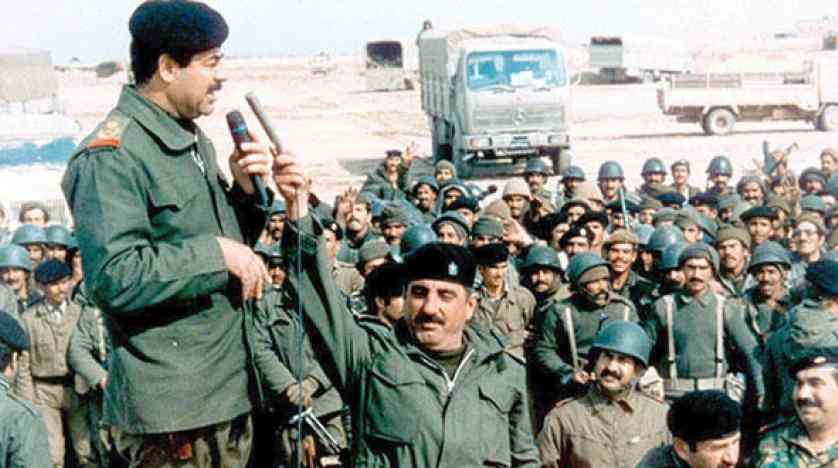
Causes of the conflict :-
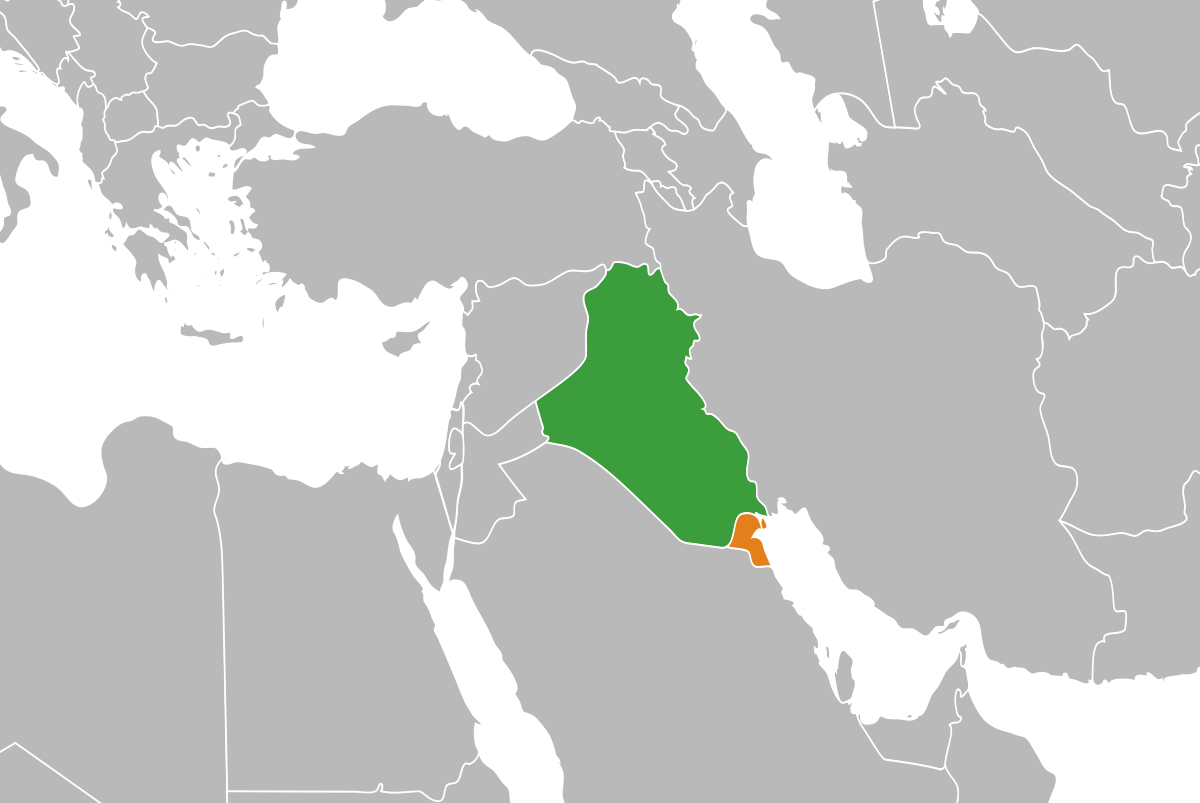
After the end of the first Gulf war in 1988, signs of differences began between Iraq and Kuwait, and the reasons were differences over some oil wells in the border areas.
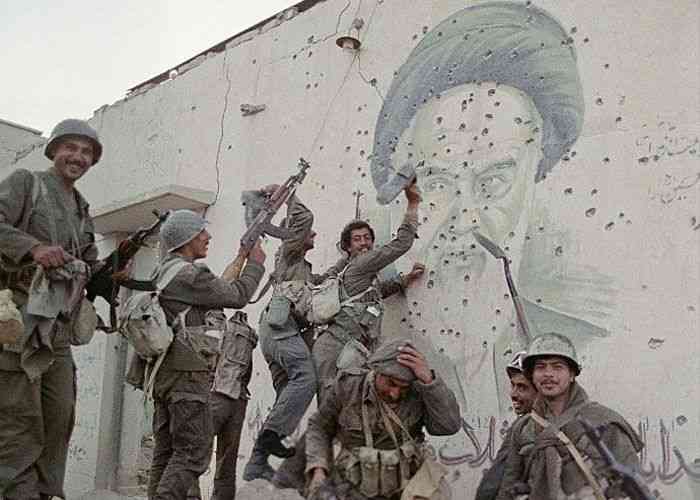


Oil dispute :-
Since September 1989, differences over the issue of oil prices and OPEC quotas have intensified, and the temperature has increased between the two countries.
Iraqi President Saddam Hussein arrived in the Jordanian capital, Amman, on February 23, 1990. The oil dispute between Iraq and Kuwait was the main topic of discussion at the meeting of the Gulf Cooperation Council. But the meeting failed. After the failure of the Amman meeting between the leaders of the Arab Cooperation Council, on February 24, 1990, and the Gulf states, in an attempt to conclude an agreement between Kuwait, Saudi Arabia and Iraq, to address the Iraqi economic situation. However, the Iraqi President asked him to undertake this visit, on his behalf.
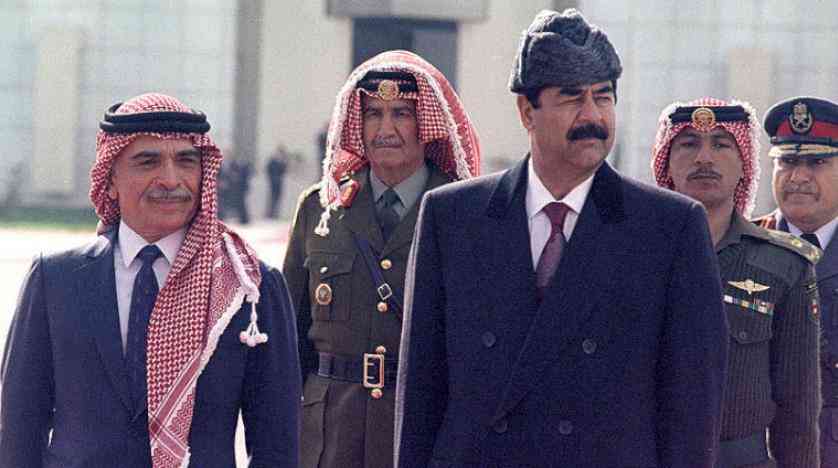
On May 3, 1990, Iraq returned to its chronic complaint from Kuwait, because of its excess production over its stake in the "OPEC" agreements. Tariq Aziz, the Iraqi foreign minister, lodged a complaint about the high rate of oil production in the "OPEC" countries, which constitutes an escalating threat to Iraq, especially that he was out of the Iraq-Iran war and in need of strengthening its economy.
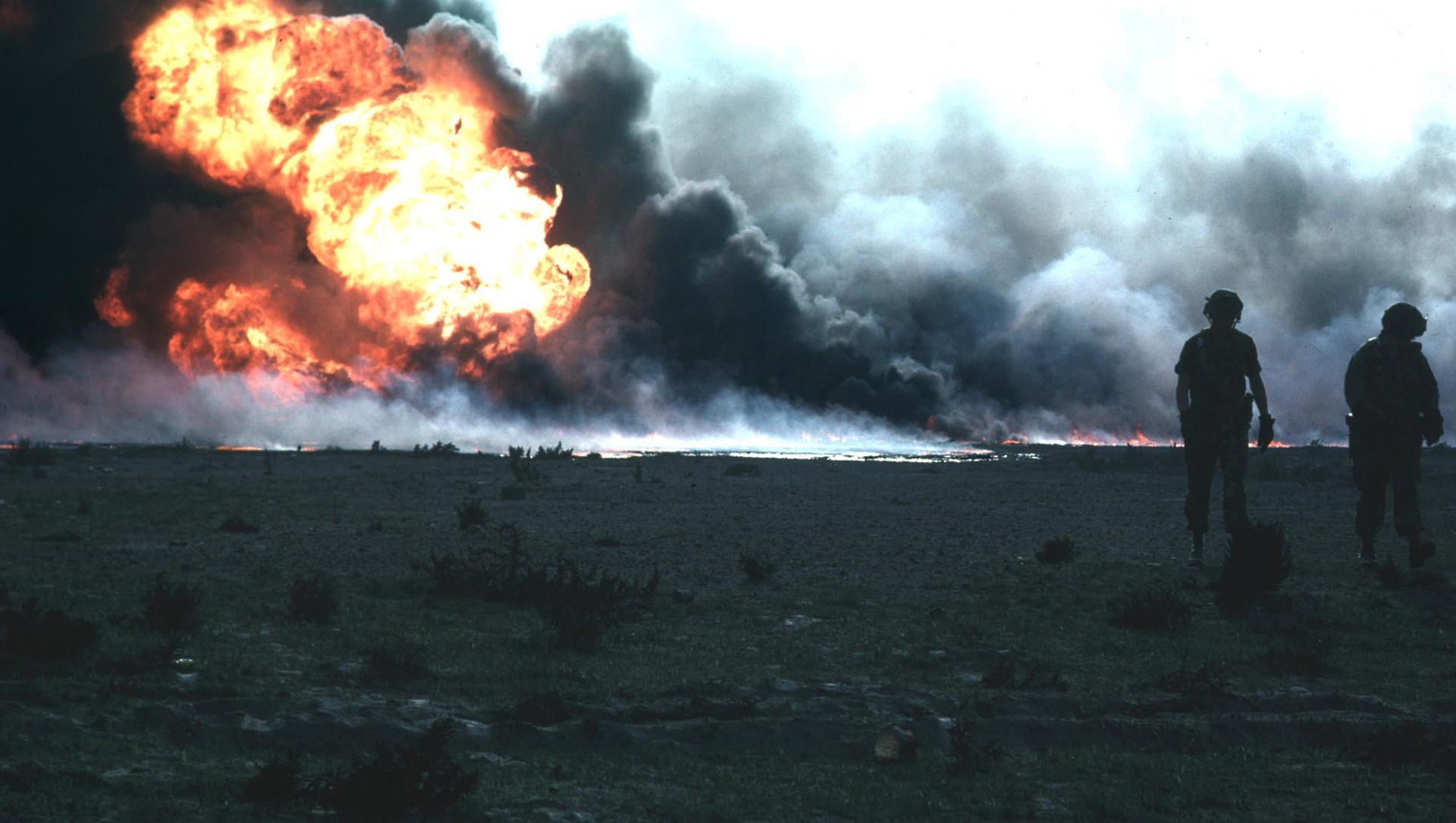
Since early July 1990, signs of the crisis have started to appear publicly. This was evident, after the Iraqi President received Saudi Arabia's Oil Minister, Hisham Al-Nazer, in Baghdad on July 8.

Prepare for the invasion :-
Iraqi Military Intelligence Directorate reports summarized their role in preparing for the invasion of Kuwait and published it in the book "The Mother Of All Battles":
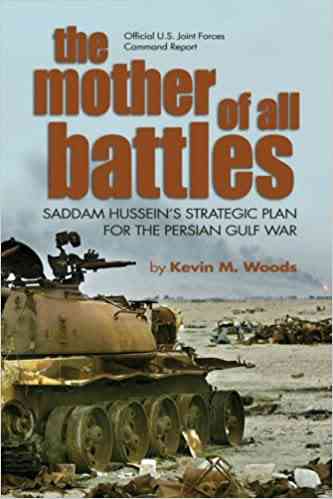
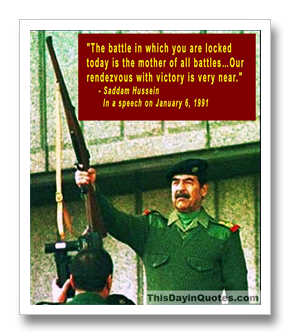
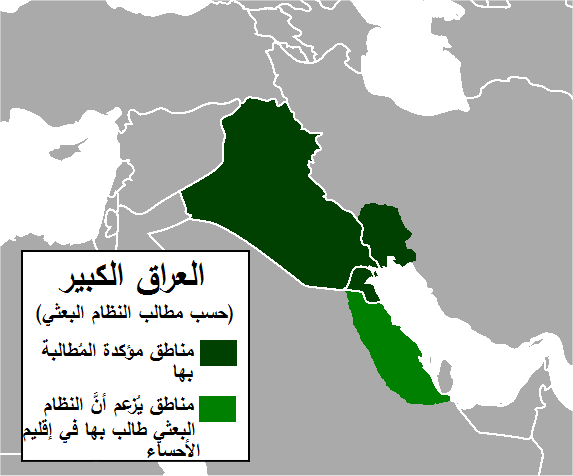
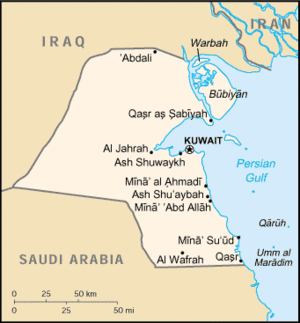
- In implementation of President Saddam Hussein’s verbal orders, and in accordance with our secret and personal book, on July 12, 1990, the Directorate provided the Republican Guard Commander with an analysis of the field of operations, details of Kuwaiti forces ’preparations, and a video of the Iraqi-Kuwaiti borders.
- On July 24, the Directorate provided the Commander of the Republican Guard with information about all embassies and communication centers in Kuwait. She also reported on the Kuwaiti air force and air defense.
- On July 25, the Directorate submitted a report on the possibility of foreign military intervention in the event of a military conflict with Kuwait.
- On July 31, the Directorate summarized all Kuwaiti military movements for the period from 19 to 29 July, in addition to a list of all vital targets inside Kuwait.
- On July 31, the Republican Guard was provided with a detailed list of members of the Kuwaiti government, the National Assembly, and senior Kuwaiti officers.
As for preparing the Republican Guard forces for the invasion process, I started by conducting a rally for his forces near the Kuwaiti border, and it appears that the majority of Republican Guard officers were not aware of the purpose of this rally, as stated in the memoirs of the team Raad al-Hamdani "at 3:30 on July 15, 1990 called me by phone Colonel Mohtamid Al-Tikriti, Chief of Staff of the Hammurabi Division, Republican Guard, and asked me to prepare a regional brigade - the Legion of the Armored Brigade 17 Republican Guards - his camp was at that time in Kut - and with a short notice, according to an order from the Supreme References of the movement towards the southern sector (Burjusiya near Mount Sanam - South West of Basra) and told me that tankers will arrive in the morning,
Immediately, the brigade's brigade was warned and summoned to the metaphors .... While inspecting my unit’s preparations for the movement, I used to strike a fifth of a sixth to come up with a logical conclusion to this surprise movement to a region adjacent to Kuwait, and during my conversations with the Lieutenant Colonel Lieutenant Colonel February Matar Ali and some commanders of the units and answering to inquire about what I expect it.
I indicated that waving power or displaying it is a method of politics and a pressure card that helps in resolving the political and economic crisis that has grown in the recent period with Kuwait, and I began to explain to them the topic of the political crisis and some of its management methods all the way up to For what is called the war edge policy that is resorted to in order to reach peaceful solutions to these crises, and I have indicated that this crisis is on the way to being resolved within a few weeks, and that the Arab family will strive to contain it and help in resolving it for sure ...... This was the most extreme My thinking reached it then. "
After General Al-Hamdani’s brigade moved near the Kuwaiti border, he noticed that the issue increased in size when he learned that the rest of the formations of his squad had warned of the movement and also included formations from other teams until the movement included all the Republican Guard teams.
The Guard officers informed the brigade commanders of the true purpose of that rally 4 days after their move, as al-Hamdani mentioned, "At 11:00 on July 19, 1990, I asked to appear at the division headquarters that had just opened in the same district, and I entered my commander in his mobile circle and found A copy of his Qur’an on his table unusually prominent, and after exchanging a short conversation about the processes of completing the rally, he asked me to stand up to the department on concealing a project bearing the number 17 related to the liberation of Kuwait!
And that the task of regional brigade constitutes the largest part of the Republican Guard’s mission in general, the first duty force of the Republican Guard forces, and this is what requires my notification of the mission before I command other formations, and I was surprised at the size and depth of the mission.
Then, in the days between 20 and 31 July, because the plan lacked many details / Al-Hamdani and other guards officers were busy planning the details of that mission and distributing tasks and duties.
Despite these preparations, the sectors did not know the zero hour of the attack until two days before it. The following was mentioned in the book "The Legion of the Infantry Brigade, the 14th Republican Guard about surprise and secrecy". To the original, as all the pieces were aware of the duty only two days before the battle. "
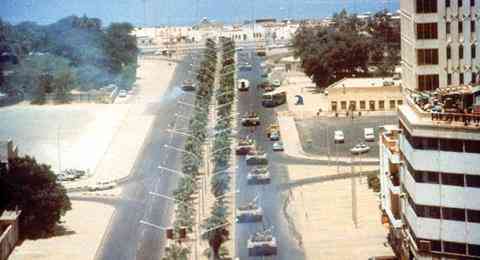
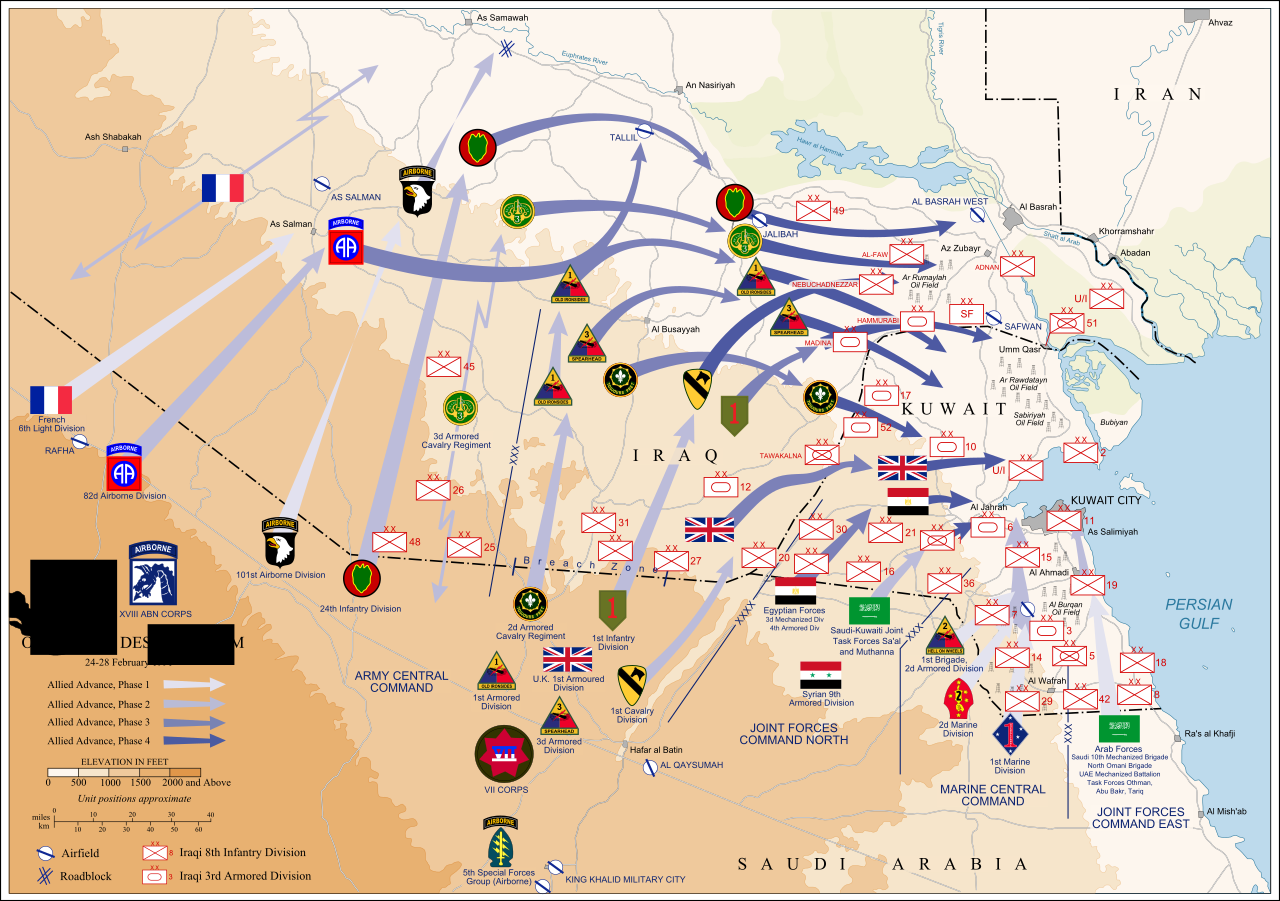
The final evocations were on August 1, as reported in the book of the 16th Special Forces Brigade, Republican Guard
A- Explore the Iraqi-Kuwaiti borders and determine the following:First: The border posts that are hostile to each occupation.Second: attack methods for formations.
B - Issuing preliminary orders.
C- Checking trends for formations toward their initial and subsequent goals.
D- Issuing final orders.
E- The coordination conference was held.
First: Presenting the formation plans and making amendments to them.
Second - The commanders of the formations presented their dilemmas and how to deal with them
F- Complete the first-line equipment and two-second lines.
Speed was a cornerstone of the plan’s success.
G- Receive the livelihood of the battle for 72 hours
H- Fill up the fuel tanks and reserve a sufficient distance of 150 km.
Other army formations were not aware of the invasion process, and the defense minister, Lieutenant General Abdul Jabbar Shanshal, did not know the oldest Iraqi officer in it until after the invasion, where Saad al-Bazzaz mentioned that he was known by him on the radio, and neither was the chief of staff of the army, Nizar Khazraji, mentioned in an interview in the Ghassan book. Charbel, "Saddam passed from here." "Abdul Jabbar Shanshal was the Minister of Defense and I was the Chief of Staff, and we did not approach the issue of the invasion of Kuwait from near or far.
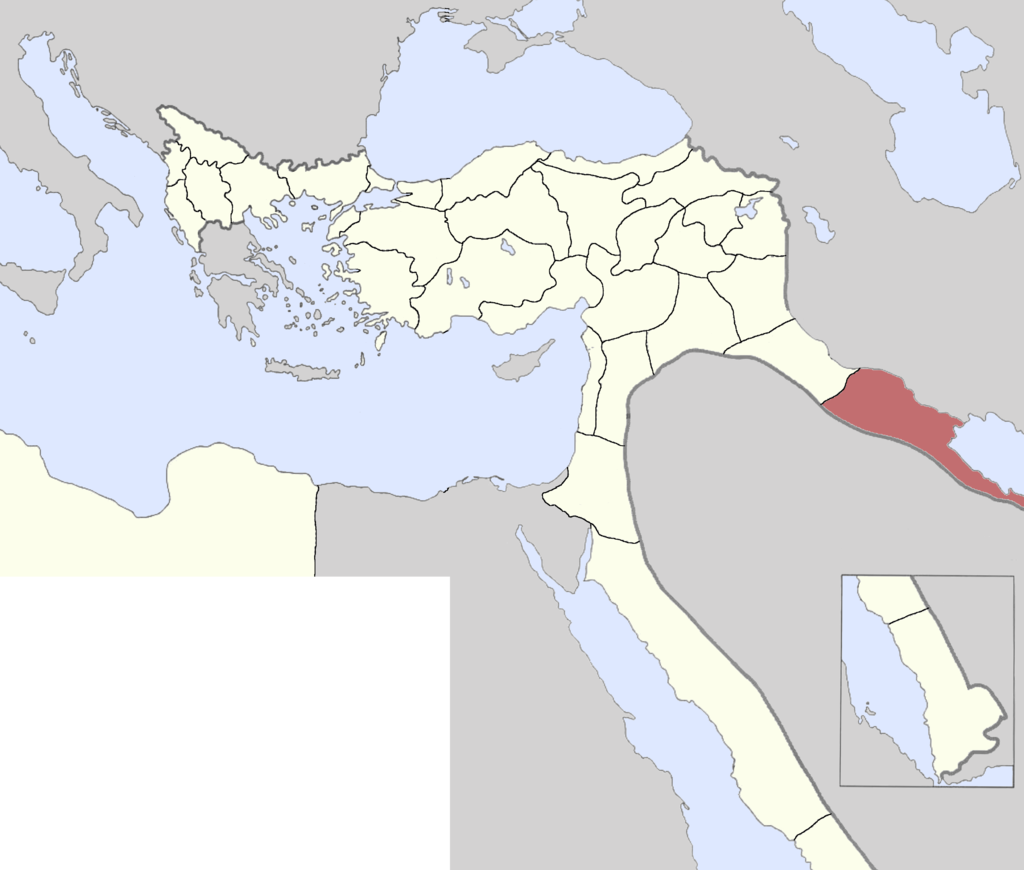
The invasion : -
The Iraqi forces mobilized 7 military divisions from the Republican Guard to carry out the invasion of Kuwait in addition to the special forces units. The plan of the invasion summarized an attack from four axes as follows:
The armored division Hammurabi on the axis of Safwan - Abdali - Al-Mutlaa - Jahra - Kuwait City, followed by the Nebuchadnezzar infantry division and the Baghdad infantry division on the same axis.
Al-Faw Infantry Division on the axis of Umm Qasr Al-Sabya and Boubyan Island.
Al-Madinah Al-Munawara armored division on the axis of Rumaila - Al-Abraq - Ali Al-Salem Air Base then Al-Ahmadi in the south of Kuwait City, followed by Adnan infantry division on the same axis.
The band Tawkulna Allah, the armored vehicle, on the middle axis between the Hammurabi division and the Medina group, and is stationed in the west of Kuwait.
On the other hand, the Kuwaiti forces consisted of the 35th Armored Brigade in western Kuwait, the 15th Armored Brigade in southern Kuwait, and the 6th Infantry Mechanized Brigade in northern Kuwait, in addition to a commando battalion, units from the border guards, and the Amiri Guard forces.
At 02:30 at dawn on August 2, an Iraqi infantry battalion backed by tanks occupied the island of Boubyan from the south, and the island had a Kuwaiti military garrison and Iraqi forces also attacked Failaka Island and clashed with its garrison.
In the capital, air and naval forces landed during the first hours of the invasion and clashes erupted around the Dasman Palace with the Emiri Guard forces, in Jahra (29 km west of the capital). At the end of the second day of August, the Iraqi forces had taken control of most of the Kuwaiti lands, except Failaka Island, whose military garrison continued to defend them until the fourth day of August.
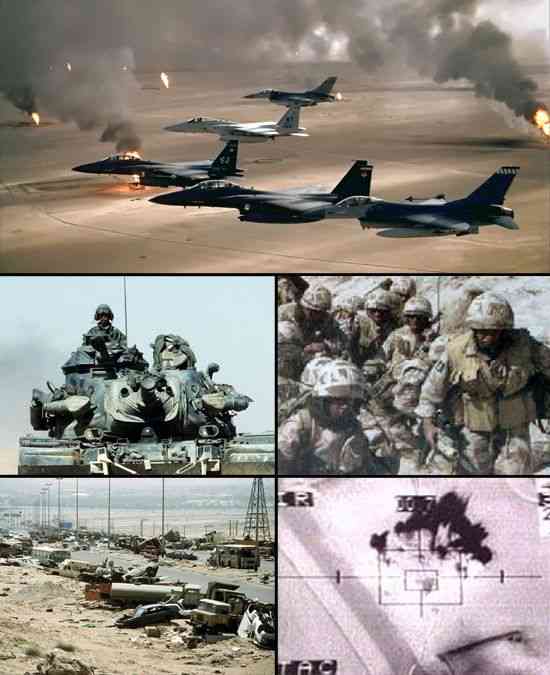
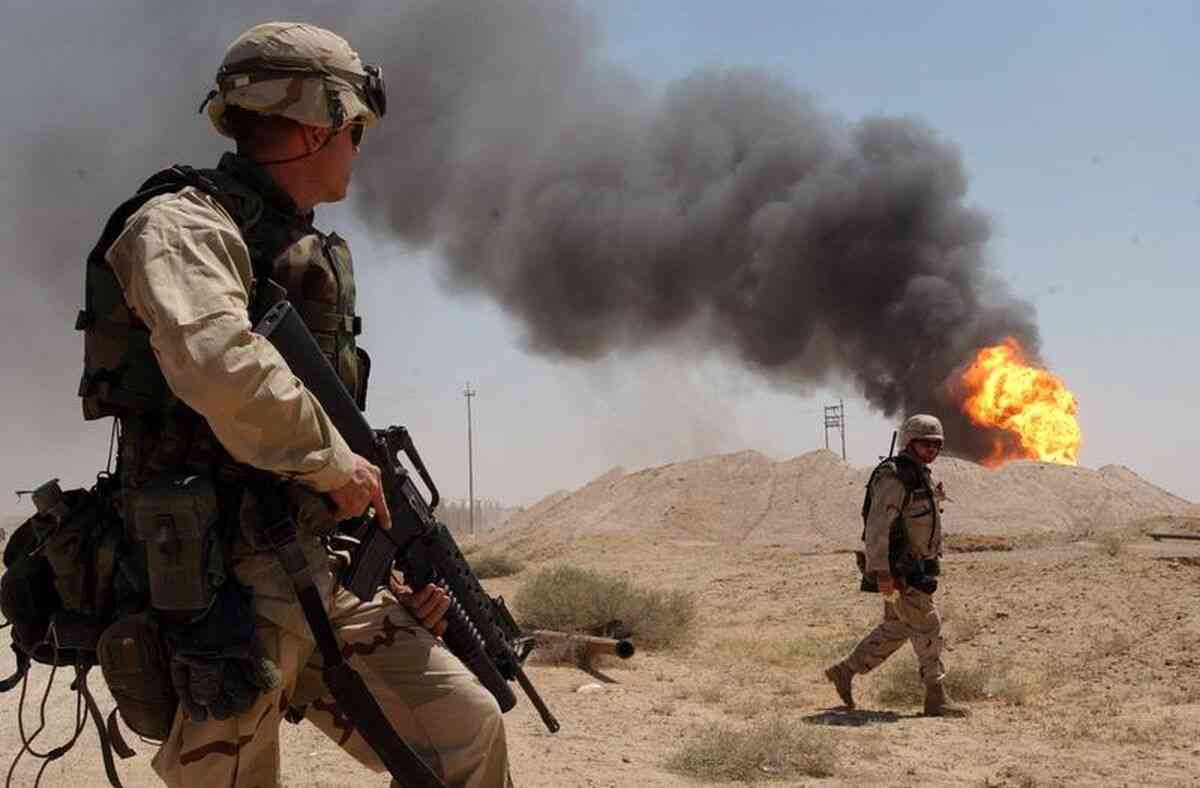
Highway of Death :-
Death Road is a name that symbolizes Highway 80 that connects Kuwait City to the Abdali border port on the Kuwaiti-Iraqi border and from there in Safwan the road linking from Safwan to Basra.
This road was called after the coalition forces destroyed more than 1400 vehicles of the Iraqi army that were on their way to Basra withdrawing from Kuwait, where the road was transformed from a highway that leads to Basra to a road of death, and the American forces have monitored the movement of the Iraqi forces in this On the night of February 26, 1991, it launched an air attack on withdrawing Iraqi vehicles and vehicles. As a result of the attack, several hundred soldiers were killed, many of whom abandoned their vehicles in order to avoid destroying them during the shelling. The road was named after Jaber Al-Ahmad Al-Sabah Road, after the Emir of the State of Kuwait at the time.
